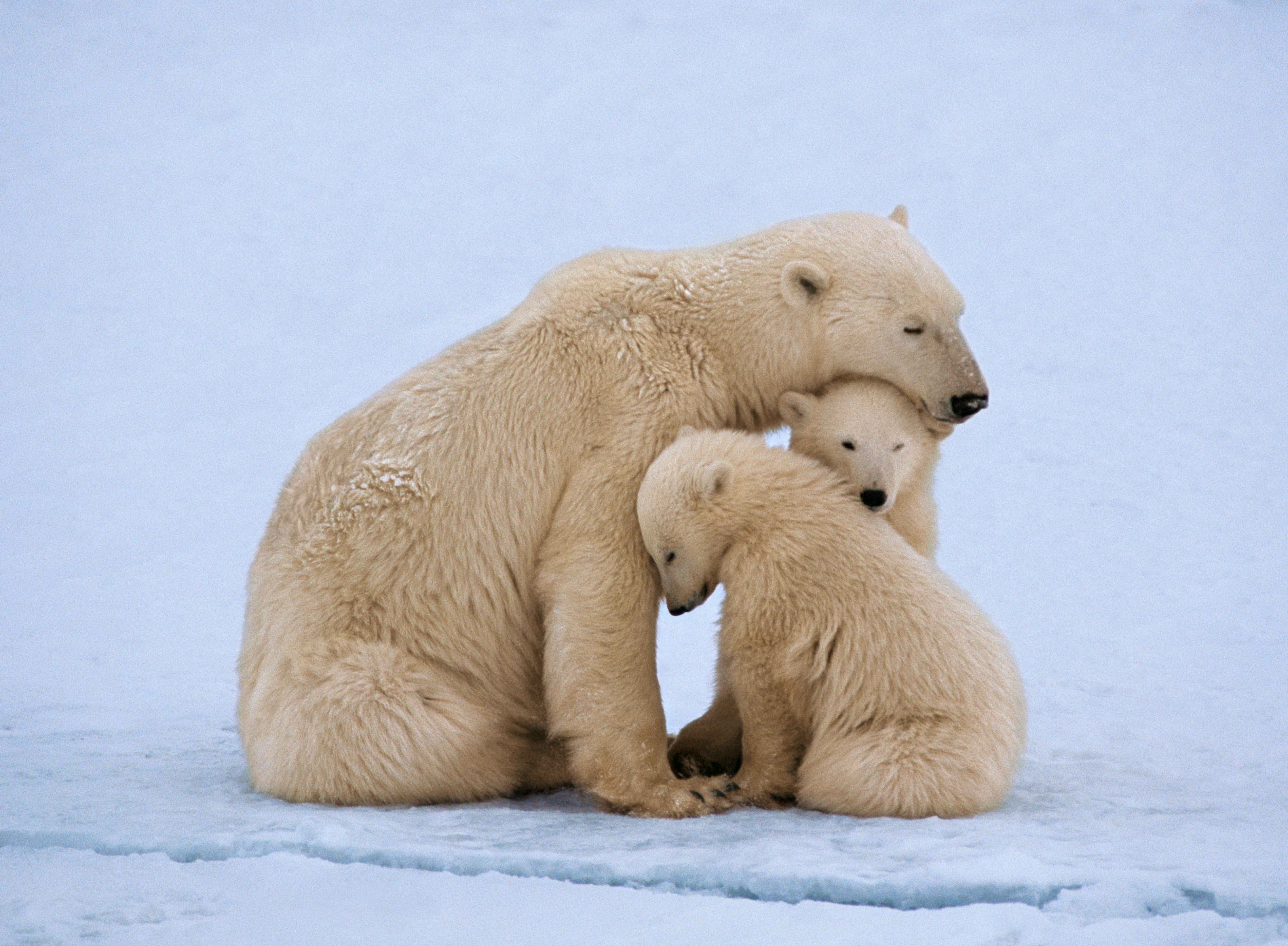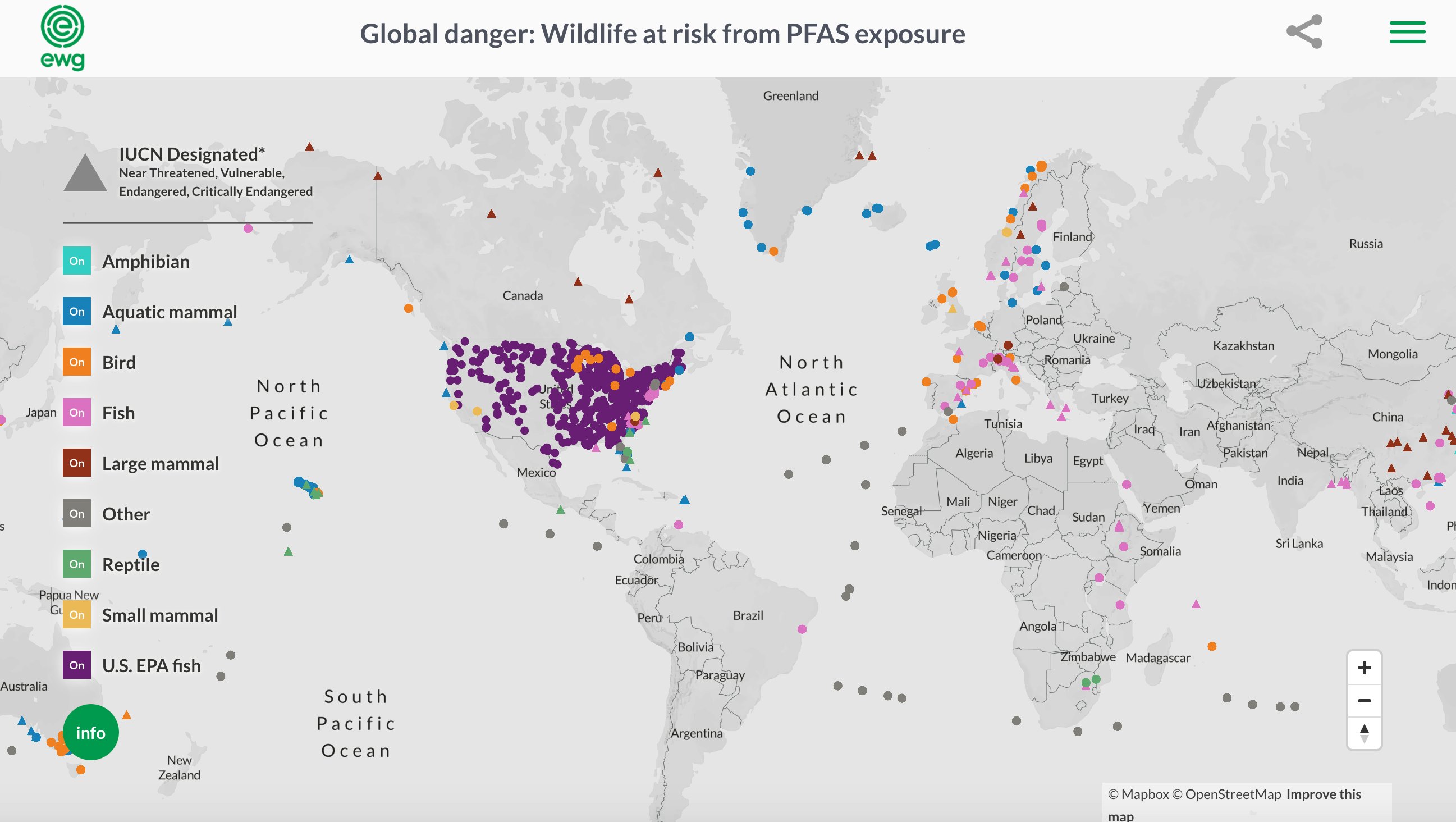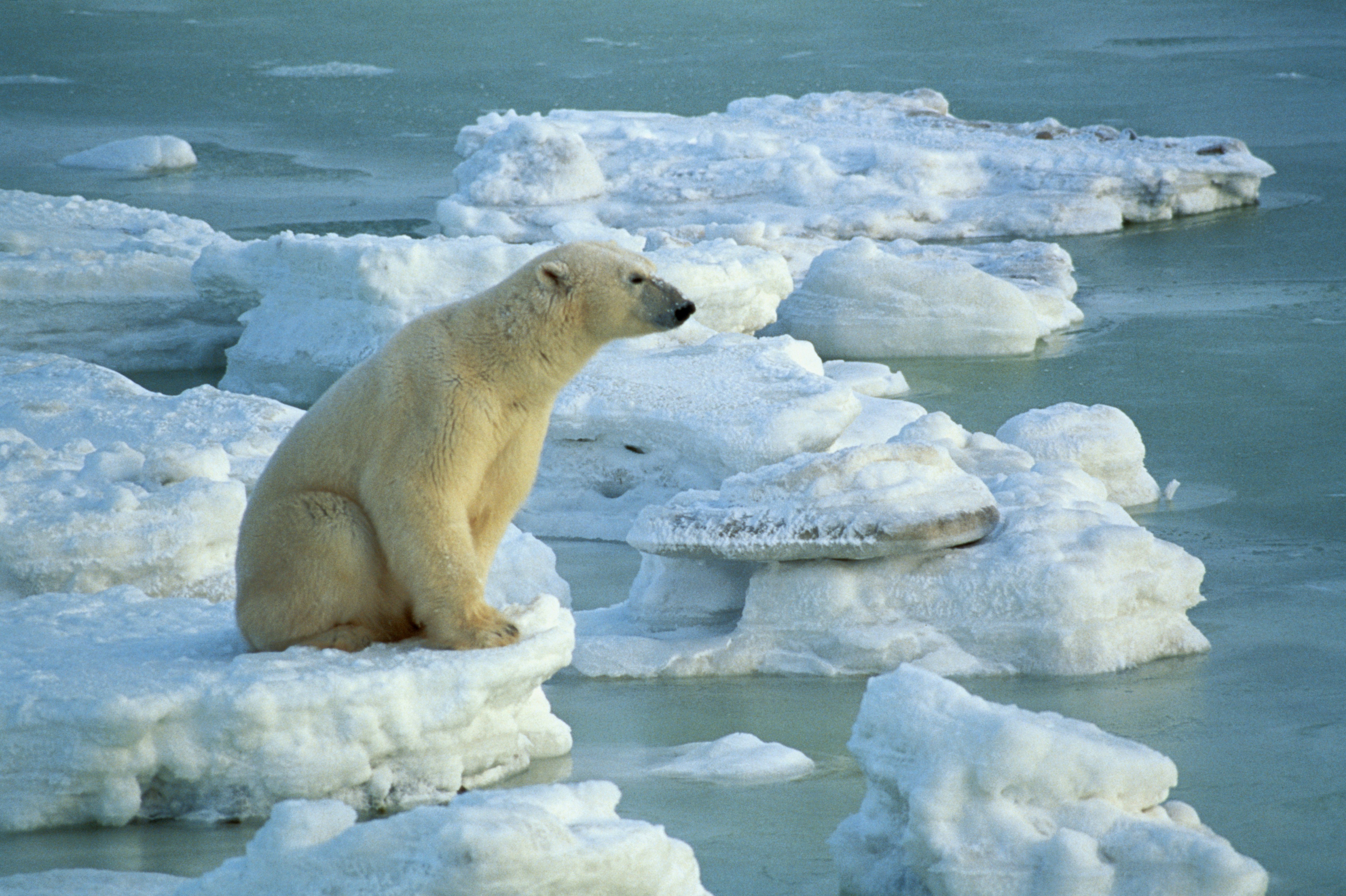
What does your morning routine look like? Let’s say you started off by shampooing your hair, brushing and flossing your teeth, and scrambling up some eggs in a non-stick pan before grabbing your umbrella — there’s rain in the forecast — before heading out the door.
You may not know it, but all of those activities include products known to expose humans to toxic “forever chemicals” known as per- and polyfluoroalkyl substances (PFAS). These chemicals are used in the manufacturing of many household products and acquired their grim nickname because they don’t break down easily and can linger in the environment and human body for years.
Previous scientific research has discussed a host of harmful links between PFAS and human health — including cancer risk — though there’s been significantly less scientific coverage of how PFAS might be affecting animal wildlife, though PFAS can build up in soil, air, and water.
But a new report published Wednesday by the Environmental Working Group — a nonprofit consumer advocacy organization focused on issues like chemical safety and agriculture — suggests PFAS may pose a threat to hundreds of animal species worldwide. The findings were condensed into a “first-of-its-kind” interactive map showing where wildlife is threatened around the globe.
“This is one more staggering visual that shows the extent of widespread contamination caused by PFAS pollution,” Tasha Stoiber, senior scientist at the Environmental Working Group adding that policymakers should be “highly concerned” about these findings.
Where Are Animals at Risk of PFAS?

Scientists affiliated with the Environmental Working Group analyzed more than 100 peer-reviewed studies on PFAS and wildlife to create their global map, which found more than 330 species are at risk of exposure to forever chemicals. The researchers detected more than 120 distinct types of forever chemicals in these animal species. These new findings build on their previous research published in January linking high levels of PFAS in freshwater fish throughout the U.S.
The researchers found exposure to PFAS in every continent around the world except Antarctica, though more species appear in places like Europe and North America, owing partly to a large EPA dataset on freshwater fish in the U.S.
“But in reviewing the available studies, there are data gaps in several specific regions and fewer studies were noted in the Global South,” Stoiber says.
There was a greater representation of fish species on the map because these animals are a source of food and vital to many countries’ economies, making them more likely to appear in scientific research. The data also encompasses many aquatic mammals like orcas and dolphins.
But the map spans the gamut of animal species from smaller mammals like Felix catus (domestic cats) to birds like the Boops boops — literally meaning “cow eyes.” The iconic American bald eagle even makes an appearance on the map in Minnesota along with green turtles in Hawaii.
“We wanted to highlight the extent of PFAS contamination in numerous types of species, including many types of fish, birds, reptiles, frogs and other amphibians, large mammals and small mammals,” Stoiber says.
The map also uses a triangle to designate species that also appear on the IUCN Red List of Threatened Species, which means they are already at greater than normal risk of extinction — before even factoring in PFAS. Some beloved threatened animals like polar bears, red pandas, manatees, and sea otters grace the map, potentially putting their existence on even shakier ground.
How Are Animals Exposed to PFAS?

A significant source of PFAS is from industrial manufacturing of household goods. These industrial sites can release PFAS into the soil, air, and water, exposing both humans and wildlife.
“PFAS is transported through ocean currents and in the atmosphere to remote regions around the world,” Stoiber says.
As a result, species in all corners of the globe are at risk of the toxic chemicals, though researchers explain that wildlife living near contaminated water sources or closer to densely populated areas are at higher risk. Some animals like polar bears may also consume PFAS in fish or other food sources.
But scientists say that wildlife may still be at risk of PFAS exposure, even if they don’t appear on the map, since that data only encompasses species from the scientific studies that were analyzed.
“Further testing would likely reveal similar exposure for wildlife in locations not highlighted on this map, since the PFAS pollution is a truly global crisis,” write researchers in the report.
Is This Map Really Such a Big Deal?
In a word: yes. Although there’s less scientific research about how PFAS affects animals compared to humans, there’s still enough data to be concerned.
A 2020 paper found biomarkers associated with altered liver and immune function in striped bass — owing likely to PFAS exposure. Other recent studies have found associations between altered immune response and PFAS exposure in bottlenose dolphins and American alligators, as well as impacts on hormones in polar bears.
“Significant association between infectious diseases and elevated concentrations of PFOS/PFOA in the livers of sea otters is a cause for concern,” write researchers in a similar paper from 2006 (PFOS and PFOA are two common types of forever chemicals).
Stoiber says the effects on animals are “similar [to] what we know about the health impacts in humans.” PFAS are also a particular concern to animals already threatened with extinction due to climate change or habitat destruction, since exposure to these chemicals may affect their bodies in ways that make them less resilient to disease or injury.
Plus, plenty of the fish on the map in are found in freshwater rivers and lakes where Americans get their drinking water, and species like the striped bass are a common catch in recreational fisheries. So it’s not just the animals we need to be worried about — but our own health, too.
What Can We Do About Forever Chemicals?
Out of the more than 12,000 known PFAS compounds, EPA has currently approved more 1,000 types of PFAS for manufacturing — and experts still say that’s too many.
“We know that PFAS are accumulating in the bodies of humans and wildlife, so turning off the tap and limiting their use as much as possible is critical for controlling this pollution,” Stoiber says.
“What's needed the most is ending nonessential uses of PFAS,” Stoiber argues.
At an individual level, we can try to push for reduced PFAS on the consumer side by buying fewer household products that contain these toxic chemicals. Pay attention to products with labels like "non-stick", "stain-resistant" and "wrinkle-resistant,” which may indicate the presence of PFAS. You can find lists of PFAS-free rain gear and other products online.
But experts say bigger changes will need to come from the government if we really want to curb the sheer amount of PFAS in our world. Stobier says the government must regulate all PFAS as a designated class of chemicals to avoid“the perpetuation of contamination.” Otherwise, we may run into a situation where the government regulates one type of PFAS only for manufacturers to replace it with a different type of toxic forever chemical compound. With better regulation, we can prevent the widespread release of forever chemicals into animal habitats — and our own homes.
“This class of chemicals has been used indiscriminately for decades with little regulation, and now is the time to act,” Stoiber concludes.







